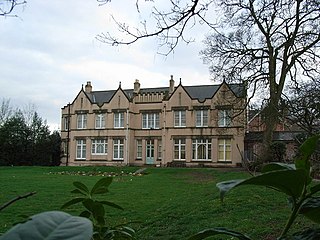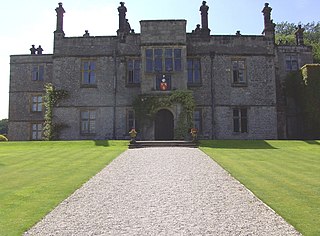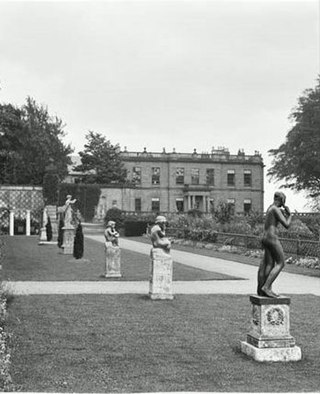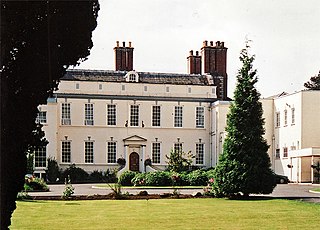Related Research Articles

Wallingwells is a small civil parish and hamlet in the Bassetlaw district of Nottinghamshire, England, with a population at the 2001 census of 22. The population remained less than 100 at the 2011 census, details were included in the civil parish of Carlton in Lindrick. The population was recorded as 27 at the 2021 census. It lies about five miles north of Worksop.

Wilton is a small village in Redcar and Cleveland, North Yorkshire, England. In 1951 the parish had a population of 958.

Pype Hayes Hall is a former mansion house in the Pype Hayes area of Erdington, Birmingham, England. The hall's grounds now form Pype Hayes Park. It was formerly in the historic county of Warwickshire before being transferred into the new county of the West Midlands, along with the rest of the city, in 1974. It has grade II listed status.

Lemmington Hall is an 18th-century country mansion incorporating a 15th-century tower house, situated near Edlingham, Northumberland, England. It is a Grade II* listed building. The original tower house built for the Beadnall family in the early 15th century was a four-storey construction which was reduced in height in the 17th century when Nicholas Fenwick converted the building into a country house.

Tissington Hall is an early 17th-century Jacobean mansion house in Tissington, near Ashbourne, Derbyshire. It is a Grade II* listed building.

Somerford Hall is an 18th-century Palladian style mansion house at Brewood, Staffordshire. It is a Grade II* listed building.
Swythamley Hall is a late 18th-century country house near Leek, Staffordshire which has been converted into four separate residences. It is a Grade II listed building.

Duffield Hall is a 17th-century country house situated in the Amber Valley, Derbyshire and the former headquarters of the Derbyshire Building Society. It is a Grade II* listed building.

Markeaton Hall was an 18th-century country house in Markeaton, Derbyshire.

Matfen Hall is a 19th-century country mansion in Matfen, Northumberland, England, the seat of the Blackett baronets and now also a hotel and country golf club. It is a Grade II* listed building.

Sir Nigel Gresley, 6th Baronet was an English land-owner, mine-owner, and canal builder. Born into the Gresley family of Staffordshire, he enrolled at an early age in the Royal Naval Academy. He served in the Royal Navy for eight years, attaining the rank of lieutenant, before his career was cut short due to rheumatic issues. In 1753 he inherited his brother's baronetcy, and became owner of estates at Drakelow and Knypersley. As part of these he owned several mines at Apedale, and in 1775 he obtained an Act of Parliament to build Sir Nigel Gresley's Canal, which was completed in the following year and held a monopoly over Newcastle-under-Lyme coal for forty-two years. He died at Bath, Somerset, in 1787.

Beamish Hall is a mid-18th-century country house, now converted to a hotel, which stands in 24 acres (97,000 m2) of grounds near the town of Stanley, County Durham. It is a Grade II* listed building.

Windlestone Hall is a mid-16th century Elizabethan country house, heavily rebuilt in 1821 to form a Greek revival stately home, situated near Rushyford, County Durham, England. The Hall sits within 400 acres of designed parkland. It is a Grade II* Listed building. As of 2022 it is back in private family ownership, with the surrounding estate maintained and conserved by a dedicated heritage charitable trust.

Stanton Hall is a privately owned country house at Stanton in Peak in the Derbyshire Peak District, the home of the Davie-Thornhill family. It is a Grade II* listed building.

Parwich Hall is a privately owned 18th-century mansion house at Parwich, near Ashbourne, Derbyshire Dales. It is a Grade II* listed building.

Tyttenhanger House is a 17th-century country mansion, now converted into commercial offices, at Tyttenhanger, near St Albans, Hertfordshire. It is a Grade I listed building.

Haughton Hall is an early 18th-century country house situated at Haughton Lane, Shifnal, Shropshire, England now converted for use as a hotel. It is a Grade II* listed building.

Onesacre Hall is a Grade II* Listed building situated in the rural outskirts of the City of Sheffield in South Yorkshire, England. The hall is located on Green Lane in the small hamlet of Onesacre in the suburb of Oughtibridge, 5 miles (8.5 km) north west of the city centre.

Osbaston Hall is a privately owned 18th-century country house at Osbaston, Leicestershire. It is the home of the de Lisle family and a Grade II* listed building.

Borwick Hall is a 16th-century manor house at Borwick, Lancashire, England. It is a Grade I listed building and is now used as a residential outdoor education and conference centre by Lancashire County Council.